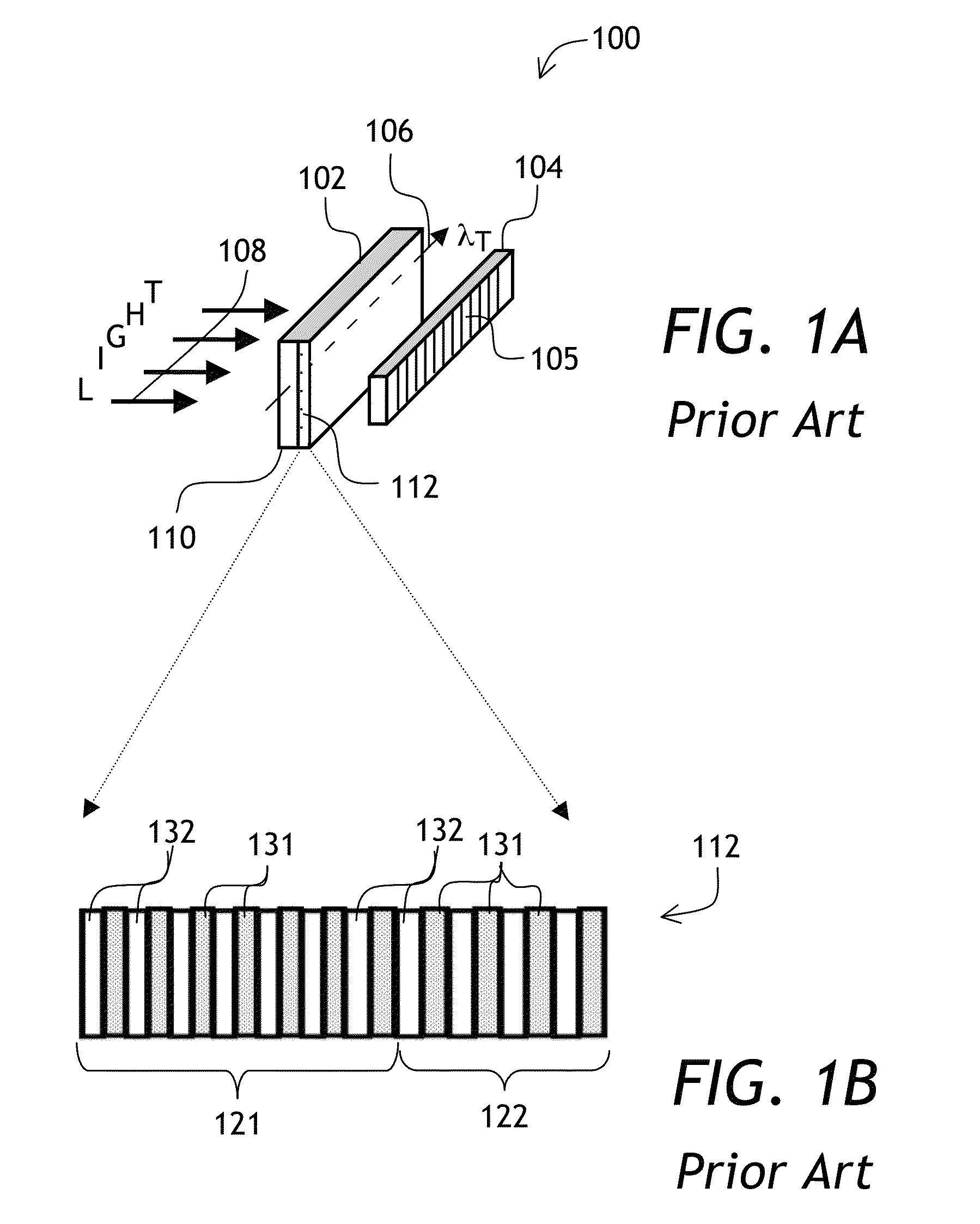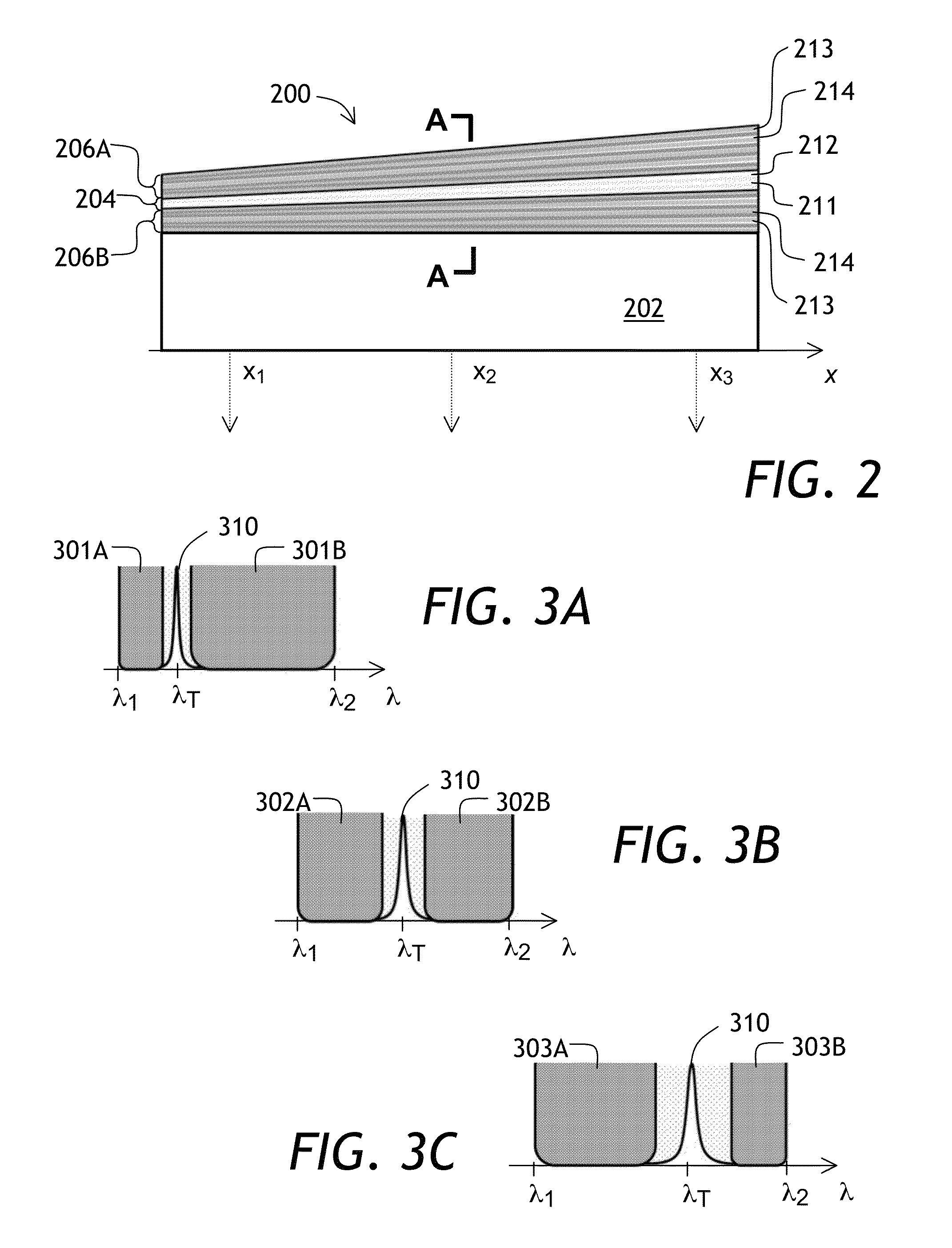Variable optical filter and a wavelength-selective sensor based thereon
a variable optical filter and sensor technology, applied in the field of optical filters, can solve the problems of thin, narrowband transmission peak, weak out-of-band rejection, low-stress variable optical filter having simultaneously a low optical loss, etc., and achieve the effect of reducing the trade-off between thickness and optical performan
- Summary
- Abstract
- Description
- Claims
- Application Information
AI Technical Summary
Benefits of technology
Problems solved by technology
Method used
Image
Examples
Embodiment Construction
[0052]While the present teachings are described in conjunction with various embodiments and examples, it is not intended that the present teachings be limited to such embodiments. On the contrary, the present teachings encompass various alternatives, modifications and equivalents, as will be appreciated by those of skill in the art.
[0053]Referring to FIG. 2 and FIGS. 3A, 3B, and 3C, an optical filter 200 (FIG. 2) has a narrow passband 310 (FIGS. 3A to 3C) at a laterally variable transmission wavelength λT within a wavelength range between λ1 and λ2. The transmission wavelength λT is variable in a direction x shown in FIG. 2. The optical filter 200 can be disposed on a transparent substrate 202. The variable optical filter 200 includes a bandpass filter 204 and blocking filters 206A, 206B disposed over the substrate 202. The bandpass filter 204 comprises a stack of alternating first 211 and second 212 layers including first and second materials, respectively. The first 211 and second...
PUM
 Login to View More
Login to View More Abstract
Description
Claims
Application Information
 Login to View More
Login to View More - R&D
- Intellectual Property
- Life Sciences
- Materials
- Tech Scout
- Unparalleled Data Quality
- Higher Quality Content
- 60% Fewer Hallucinations
Browse by: Latest US Patents, China's latest patents, Technical Efficacy Thesaurus, Application Domain, Technology Topic, Popular Technical Reports.
© 2025 PatSnap. All rights reserved.Legal|Privacy policy|Modern Slavery Act Transparency Statement|Sitemap|About US| Contact US: help@patsnap.com



